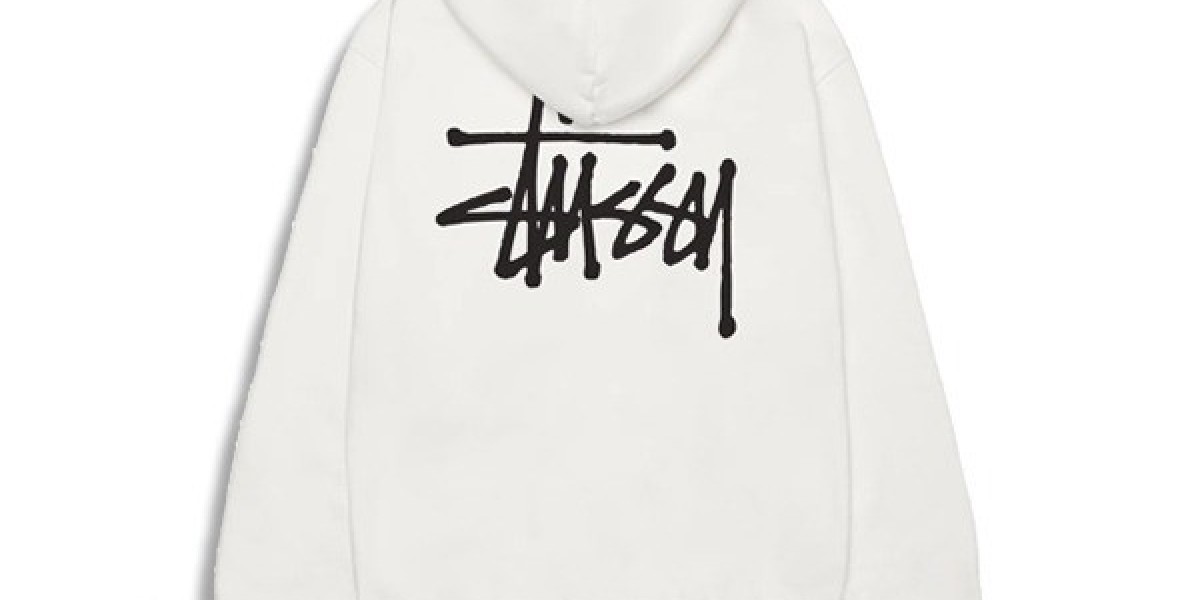In the dynamic world of fashion, trends come and go with the seasons, but some brands manage to transcend time and remain relevant across generations. One such brand is Stüssy, a name that resonates deeply within the streetwear community and continues to influence global youth culture. Founded in the early 1980s, Stüssy’s evolution from a surf-centric label to a global streetwear powerhouse is a testament to its adaptability, vision, and authentic cultural roots. Equally notable is the brand’s “pull”—the intangible allure that draws fans, collaborators, and collectors into its orbit. This article explores the origins of Stüssy, its influence on streetwear, and the magnetic pull that keeps it iconic in an ever-changing fashion landscape.
The Birth of Stüssy
Stüssy was born in Laguna Beach, California, in 1980, when Shawn Stussy, a local surfer and board shaper, began scribbling his now-iconic signature on handmade surfboards. The stylized signature—bold, simple, and slightly rebellious—would become the foundation of a brand that would later reshape casual fashion. Recognizing the potential beyond the waves, Shawn started screen-printing his name on T-shirts and caps and sold them out of his car. The unique designs, often influenced by punk, skate, reggae, and hip-hop aesthetics, quickly gained traction among Southern California youth.
Teaming up with business partner Frank Sinatra Jr. (no relation to the singer), Stussy transitioned from a local surf label into an independent clothing brand. The duo focused on limited runs, exclusive designs, and a DIY ethos, aligning perfectly with the countercultural sentiments of the 1980s and early '90s.
The Rise of a Streetwear Icon
By the late 1980s, Stüssy had crossed over from surf shops to streetwear boutiques and underground fashion circles. What set the brand apart was its ability to blur the lines between different subcultures—surf, skate, punk, hip-hop, and rave—without losing its core identity. Stüssy didn’t follow mainstream trends; it created its own codes, which resonated with youth looking to reject conventional fashion norms.
Stüssy's rise coincided with the emergence of streetwear as a distinct genre, which combined comfort with attitude and authenticity with style. While other brands focused on high fashion or athletic wear, Stüssy struck a balance—luxurious in design but raw in spirit.
Stüssy’s Global Reach and “Tribe” Culture
In the early 1990s, Stüssy’s popularity surged in international markets, particularly in Japan, where fashion-savvy youth adopted it as part of the Ura-Harajuku scene. The brand’s global expansion was helped by its network of loyal fans and collaborators—what Shawn Stussy called the “International Stüssy Tribe.” This collective included tastemakers, DJs, designers, and skaters from cities like New York, London, Tokyo, and Paris. The Tribe wasn’t just a marketing ploy—it was a real community bonded by shared interests, aesthetics, and values.
The International Stüssy Tribe embodied the brand’s core ethos: global, underground, and effortlessly cool. It was a grassroots movement that helped cement Stüssy’s position as a cultural connector, not just a clothing label.
The Aesthetic of Stüssy
Stüssy's design language is rooted in contradiction—minimalist yet bold, playful yet serious, vintage yet modern. The brand’s logo, a graffiti-style signature, serves as a versatile design tool. Whether on a hoodie, tote bag, or varsity jacket, the logo itself carries cultural capital.
Design motifs often include references to reggae, skate culture, 8-ball graphics, crown symbols, and tribal patterns. While these elements might appear eclectic, they represent Stüssy’s ability to draw from various sources without appropriating them. The brand reflects appreciation, not exploitation, of the cultures that inspire it.
Unlike many brands that chase trends, Stüssy has maintained a steady course. Its pieces aren’t seasonal statements—they’re wardrobe staples. This consistency has made Stüssy beloved among collectors and new fans alike, fostering a timeless appeal that few brands achieve.
Collaborations and Influence
A key aspect of Stüssy’s sustained relevance is its strategic and authentic collaborations. From Nike, Converse, and Levi’s to high-end partnerships with Dior and Comme des Garçons, Stüssy collaborates selectively and meaningfully. These partnerships are not just about slapping logos together; they often fuse distinct design languages and subcultural cues.
The brand has also inspired countless contemporary streetwear labels. Brands like Supreme, Palace, and BAPE have all taken cues from Stüssy’s playbook—limited drops, cultural storytelling, and an emphasis on community.
Moreover, Stüssy's influence extends beyond fashion into music, art, and design. Rappers, DJs, graffiti artists, and skateboarders have all worn the brand proudly, reinforcing its credibility and street-level appeal.
Understanding the Stüssy Pull
What is the "Stüssy pull"? It’s a mix of heritage, authenticity, and underground allure that continues to attract followers. The brand’s pull is emotional and aspirational—wearing Stüssy isn’t just about style; it’s about belonging to something larger.
This pull operates on several levels:
Cultural Resonance: Stüssy doesn’t just sell clothes; it sells attitude and identity. For those aligned with creative subcultures, the brand signals membership.
Exclusivity: Limited releases, rare international drops, and region-specific pieces create a sense of urgency and prestige.
Nostalgia and Evolution: Stüssy appeals both to those who lived through the '90s golden age of streetwear and to Gen Z rediscovering the brand via social media and vintage shops.
Cross-Subcultural Relevance: Few brands can claim to be embraced equally by skaters, rappers, fashion insiders, and surfers. Stüssy achieves this through its versatility and non-conformist stance.
Modern Day Stüssy: A Continued Legacy
In the 2020s, Stüssy has experienced a major resurgence. With vintage fashion booming and Y2K aesthetics making a comeback, Stüssy’s archives have become a goldmine. The brand continues to evolve under the leadership of new designers, but without straying from its roots.
Recent collaborations, editorial features, and capsule collections prove that Stüssy is not resting on nostalgia. Instead, it continues to shape streetwear’s future while honoring its past. Whether through understated graphic tees or high-concept fashion week releases, Stüssy retains the same spirit that made it iconic in the first place.
Conclusion: The Timeless Appeal of Stüssy
Stüssy is more than just a fashion label—it is a movement that spans decades, continents, and subcultures. Its influence on streetwear is undeniable, and its “pull” remains as strong today as it was in the 1980s. What started as a surfboard signature has become a global symbol of authenticity, rebellion, and style.
As the fashion industry becomes more saturated and commercialized, brands like Stüssy serve as a reminder of what genuine cultural connection looks like. The legacy of Stüssy lies not just in its clothes, but in its ability to inspire, unify, and define generations of creative expression. And that is the true power of the Stüssy pull.



